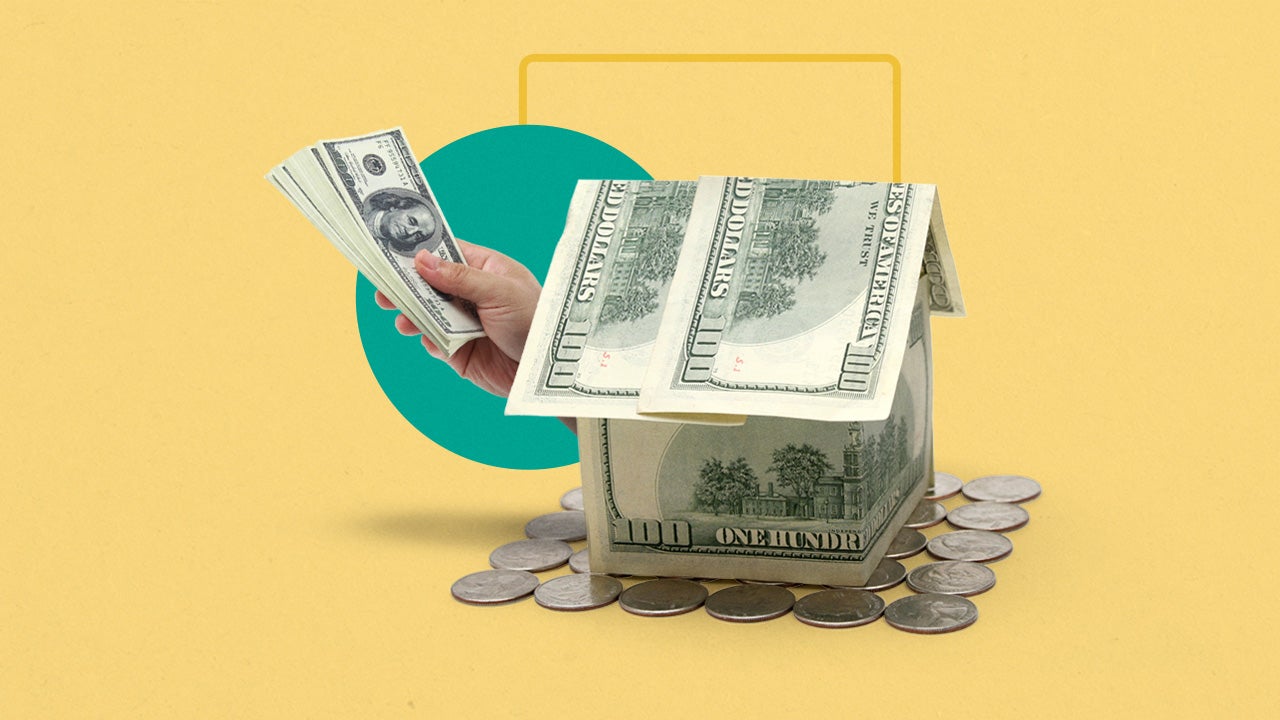How to lower your mortgage payment




Key takeaways
- To get a lower mortgage payment, you’ll need to focus on modifying the principal, interest, taxes or insurance you pay.
- You can choose to refinance or recast your mortgage to make the monthly mortgage payments more affordable.
- Addressing your property tax bill or eliminating PMI are other effective ways to get a break on your monthly housing costs.
Your mortgage is probably your biggest expense every month. So how can you make it smaller and free up funds to meet other financial goals? There are ways to lower your mortgage payments each month, but they may not all be right for you. Here’s what to know so you can make the best decision for your situation.
How can I lower my mortgage payment?
Mortgage payments consist of four parts, or PITI: principal, interest, taxes (property) and insurance (homeowners and/or private mortgage insurance). To lower mortgage payments means addressing one or more of these elements. When it comes to the first two — the key components of the loan itself — there are essentially two ways to make your payments more affordable: getting a lower interest rate or getting a longer loan term. Options to reduce mortgage payments include:
- Refinance to lower your payment
- Recast your mortgage
- Eliminate your mortgage insurance
- Modify your loan
- Lower your taxes
- Shop around for a lower homeowners insurance rate
- Apply for mortgage forbearance
1. Refinance to lower your payment
Refinancing involves replacing your current mortgage with a new one. In a basic rate-and-term refinance, your new loan offers a lower interest rate, a longer term or both.
Several factors influence whether you’ll want (or be able) to refinance, including:
- Current refinance interest rates. Are they low enough to justify the switch, considering fees and closing costs come with a refi, just as they did with your original loan? Generally, you’ll want to see a drop of at least 1 percentage point.
- How long you’ll be in your home. Consider if you plan to stay in your home long enough to recoup the refinance closing costs. Usually, that means a couple of years at least.
- Penalties for paying your home off early. Many mortgages come with a prepayment penalty, especially if the mortgage originated less than three years ago. If it does, refinancing to lower your payment may not make sense.
- Age of your mortgage. Many lenders won’t allow refinances for loans that closed within four to five months. But if your loan is recent enough that its amortization schedule still includes interest-heavy payments, it may be worth refinancing.
If you don’t qualify for a lower rate, you can buy one by purchasing mortgage discount points. A form of prepaid interest, each mortgage point is the equivalent of 1 percent of the principal amount and shaves 0.25 percent off the interest rate.
Bear in mind using mortgage points, aka “buying down the rate,” increases your upfront costs in refinancing. So that will extend the amount of time you need to stay in the house to reach the break-even point that makes the refinance worthwhile.
2. Recast your mortgage
Another approach is to attempt what’s called mortgage recasting. With this option, you make a lump sum payment toward the principal. Then, your lender re-calculates your monthly payments based on that new balance (but on the same loan term). The reduced loan amount means smaller monthly payments and less total interest paid over the course of the loan.
To illustrate how this works, assume you have a $300,000, 30-year mortgage with a 6 percent interest rate. Your current monthly payment is $1,798 for principal and interest.
Once you make payments for three years, your balance is about $288,250. You receive an inheritance and choose to make a $75,000 payment to lower the principal balance.
The principal balance on your loan will drop to $213,250. Once it’s recast, you’ll get a lower monthly payment of $1,278, which is roughly $500 lower than your initial loan payment amount.
Keep in mind that most lenders charge a recasting fee — typically between $250 and $500. And, of course, you need to have the funds to pay off a good chunk of the principal at once — but make sure to do the math to ensure it’s the best decision for your overall financial situation.
3. Eliminate your mortgage insurance
You might also try to eliminate your private mortgage insurance (PMI). PMI is assessed by most lenders on conventional loans with down payments less than 20 percent of the purchase price. It costs homeowners between 0.58 percent and 1.86 percent of the loan amount each month, according to 2023 data from the Urban Institute. However, you can request to have it removed once you have 20 percent equity in your home.
FHA loans are an exception to the rule, though. They require mortgage insurance premium (MIP) payments for the life of the loan unless you made a down payment of at least 10 percent. In that case, you can request that FHA MIP be canceled once you complete 11 years of mortgage payments on your current loan.
Learn more: Getting rid of FHA mortgage insurance premiums (MIP)
4. Modify your loan
If you’re in financial distress, the government offers loan modification programs aimed at helping with financial hardships. A modification typically changes the loan’s rate or term (or both) to make monthly payments more affordable. It’s like refinancing, only with the same loan instead of a new one.
For example, you could extend a 30-year mortgage into a 40-year loan — then your payments will be reduced, since they’ll be spread out over another decade. Bear in mind you’ll end up paying more in interest this way.
Not every lender will allow loan modifications, and there are stringent eligibility rules. And even if you get it, the difference may be too small to justify the eventual higher total cost of the loan due to paying interest for a longer period.
5. Lower your taxes
Other methods that can reduce payments don’t have to do with the mortgage itself. You can try to lower your property tax bill to reduce the escrow payment that typically makes up much of your monthly mortgage payment. Tax assessments are sometimes too high following real estate market corrections or local rezonings, for instance. If you think that could be the case for your house, consider appealing your property’s value to the relevant state or local decision-makers. Be aware of deadlines for filing an appeal if you go this route.
6. Shop around for a lower homeowners insurance rate
When was the last time you shopped around for homeowners insurance? Even if you haven’t had any issues with your current provider, better rates may be available elsewhere.
Consider shopping around with reputable providers to get quotes. Be sure to inquire about rate discounts that may be available to you. Also, review the rate quotes to ensure the coverages included are comparable to your current policy, and ask about other ways to curb costs, like increasing your deductible.
7. Apply for mortgage forbearance
If all else fails and you’re in dire straits, you can try to just put your payments on hold for a while. A mortgage forbearance will help you find temporary relief by lowering or pausing your payments for a short period. You’ll also avoid adverse credit reporting and foreclosure, and have time to get your finances in order. Be mindful that the lender will likely require you to prove you’re experiencing financial hardship before approving you for forbearance.
And it’s only a temporary reprieve. The payments you miss (including interest) must be paid eventually, in a lump sum or over time with a repayment plan. If you choose the latter, your monthly payment could increase significantly.
Next steps for lowering your mortgage payment
If your mortgage payment is stretching your budget too much, you don’t have to suffer in silence. Instead, consider reaching out to your lender to modify your loan or refinancing if it makes financial sense. You can also have your home appraised to determine if you can cancel PMI, contest your property tax bill or search for more affordable homeowners insurance.
FAQs
Additional reporting by Allison Martin




